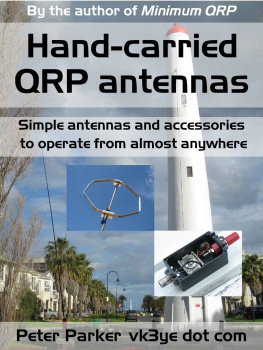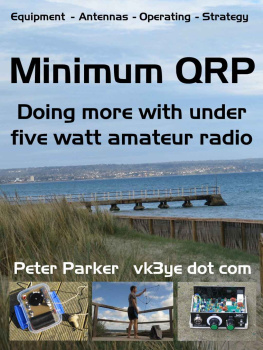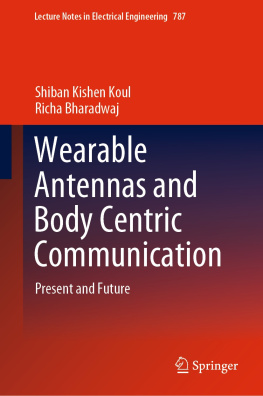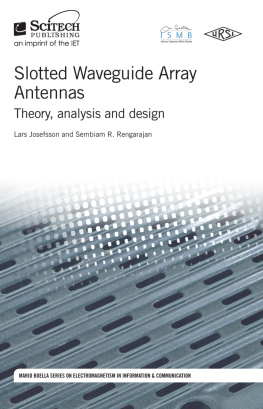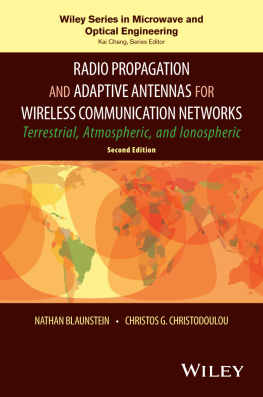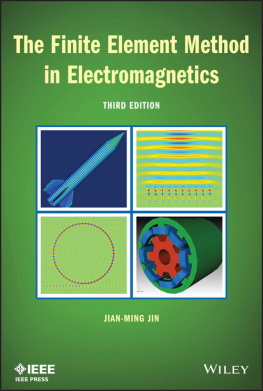Your antenna is a major element of success in QRP operating. With restricted output power your antenna must be sufficient to lift your signal above noise and interference at the receiving end. Otherwise no one will hear you and your calls will be futile.
This book describes simple and easily packed antennas that Ive found successful over many years of portable QRP. Its a practical manual with little on theory or antenna modelling. Please supplement your reading with other books and articles to fill any knowledge gaps on these topics if desired.
Styles of portable operating are as diverse as the amateurs who partake. They include anything from taking a VHF handheld transceiver on a walk to a multi-operator multi-day island DXpedition. Antenna requirements correspondingly vary.
I will concentrate on antennas light enough to be part of a station that can be hand-carried by one operator. This is desirable because some of the best radio spots, whether on a rugged peak or at the waters edge, are remote from vehicle access. Often, but not always, this means wire antennas that can be rolled up. Youll also need to carry a support if your operating site does not oblige.
Antennas taken must be practical for two to three hour operating sessions, either enjoyed on their own or as part of a longer holiday or trek. Many national park or SOTA activations fall into this category. As do impromptu twilight or grey line DX excursions. Antennas with many small parts, take a while to erect or require significant adjustment to perform well have been avoided, despite potentially excellent results at home or on a multi-day DXpedition.
Your antenna operates as part of a system which includes supporting structures, accessories and test gear. Its easy to get carried away and either overspend or take too much. Ill discuss whats really needed later and include constructional details.
The practical theme continues where several designs for portable antennas are presented. Theres some overlap with earlier chapters but this was thought better than the alternative of flipping between sections. We end with a summary of commercially available portable antennas and ten tips for on-air success with QRP.
2. OBJECTIVES AND REQUIREMENTS
When thinking about antennas it is common to type HF antenna or similar into a search engine. Searching is fun. Youll get thousands of links to various antenna designs and even more opinions on them. The choices presented are baffling.
Which to choose? Its useful to imagine yourself using the antenna . Your mental picture should be as detailed as possible, including where youll be, who youll talk to, likely time of day and bands used. And it needs to include carrying, erecting and dismantling the antenna, which a poor choice can make a hassle.

I find thinking is best done just before or after sleep where imagination is more vivid and less encumbered by sensory input. The thoughts gathered will help determine what you want and which designs and configurations can be ruled out.
Cultivating an informed appreciation of what is and is not practical with QRP keeps your thinking real. To take an extreme example, you would not get very far if your aim was to work Australia from the USA at midday local time on 3.5 MHz. Neither would regular 300km contacts be realistic on bands like 28 MHz during all but abnormal conditions.
Distinguish your objectives between the fanciful (not worth bothering with like the examples above) and the feasible, challenging and worthwhile (e.g. working Australia from Europe on 7 MHz QRP). Understanding signal propagation and reading what other QRPers have achieved helps separate the two. The time taken to do this is good insurance against getting side-tracked by aims with little chance of success.
Objectives may include working a particular band, country, station or propagation path out of pure interest. Or they may be set by award rules or contest scoring. An award may require a minimum number of contacts from a particular location to qualify as an activation. A contest may give more points to different prefixes, states, shires, counties or grid squares. Being on a regional border or seeking good results over certain paths may drive your strategy.
Others have more general interests and enjoy working anyone anywhere. A take what comes approach is particularly rewarding if youre trying a new homebrew rig or experimenting with antennas. It also does a service to hamdom in keeping alive the bands between contests and the joy of spontaneous contacts.
To me the ability to get answers to CQ calls made with QRP marks a successful antenna from the rest. However it must be suitably transportable. The best antenna thats too heavy to routinely take out will not do as well as a lighter version that gets used, so its type and materials are important and covered later.
3. STATION LOCATION AND EQUIPMENT
As with antennas every useful portable QRP station is a successful trade-off between (i) what is light enough to carry and (ii) what is heavy enough to get contacts. A bulky station will seldom be taken afield while an ultra-minimalist setup will have difficulty getting contacts.
Your trip and operating location affect what can be taken. Much less can be comfortably carried on a long hike than a short walk. The former will need water, food and shelter that a short walk does not. The longer the walk the more particular you need to be when deciding what to take.
Research amenities at outside locations before leaving home. Public seats, tables and shelters make for more comfortable operating without having to bring your own. Posts can support antenna masts. And non-electrified fences can form a ready-made earth system. Get an idea of whats there by visiting the websites of local councils, park authorities or tourist agencies. Social media is also useful to read about other visitors experiences and see recent unembellished photographs of the area.

Other times you may be staying in hotels on a work or holiday trip. Your station will be limited to what can fit in the corner of a suitcase and not exceed luggage weight limits. This may seem restrictive. However indoor use may mean that waterproofing is not required and antenna robustness can be less. This permits weight-reducing short-cuts that would not work otherwise.
Again venue research is important. City maps, Google Streetview and hotel websites can tell you a lot about the surrounding area. Things to look for include nearby open space, a water outlook, openable windows, private balconies and courtyards. High density is likely to mean high noise levels while certain building materials (e.g. steel reinforced concrete) may attenuate RF. In some circumstances you may have to allow for HF being unsuccessful and to confine activities to VHF/UHF.

